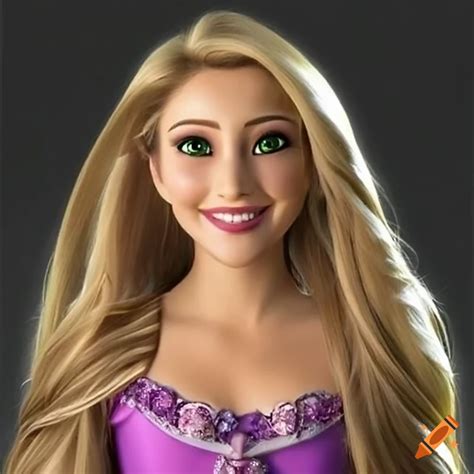Introduction

The beloved Disney princess Rapunzel has been known for her iconic golden locks since her debut in the 2010 film “Tangled.” However, in recent years, a unique and captivating transformation has occurred: Rapunzel has transitioned from her signature blonde hair to a stunning shade of brown. This article explores the reasons behind this change, its impact on the character, and the broader cultural significance of this transformation.
Reasons for the Hair Color Change
According to Disney animators, the decision to change Rapunzel’s hair color was driven by several factors:
- Stylistic Evolution: As Rapunzel matured and grew as a character, the filmmakers wanted her appearance to reflect her development. The darker hair color represents her newfound independence and maturity.
- Representation: Disney recognized the importance of representation for diverse audiences. By giving Rapunzel brown hair, they hoped to create a more inclusive and relatable character for children of all backgrounds.
- Technical Advancements: The advancements in animation technology allowed the animators to create more realistic and detailed textures, including hair. The brown hair allowed for greater depth and dimensionality.
Impact on the Character
The hair color change has had a significant impact on Rapunzel’s character:
- Emotional Depth: The brown hair has given Rapunzel a more vulnerable and approachable demeanor. It allows viewers to better connect with her emotions and relate to her struggles.
- Confidence and Empowerment: The darker hair color symbolizes Rapunzel’s growing self-assurance and empowerment. It reflects her journey from a sheltered princess to a strong and independent young woman.
- Symbolism: The brown hair has become a symbol of Rapunzel’s transformation and the importance of embracing one’s true identity.
Cultural Significance
The transformation of Rapunzel’s hair color has broader cultural implications:
- Breaking Princess Stereotypes: By challenging the traditional image of a blonde princess, Disney has sent a message that beauty and femininity can come in many forms.
- Representation and Inclusivity: The brown hair represents Disney’s commitment to inclusivity and creating characters that reflect the diversity of its audience.
- Embracing Change and Growth: Rapunzel’s hair color change serves as a reminder that change and growth are essential parts of life and should be embraced.
Comparative Analysis
Pros and Cons of Blonde Hair
Pros:
* Classic and iconic look
* Light and airy appearance
* May evoke a sense of innocence and purity
* Often associated with traditional beauty standards
Cons:
* Can appear unrealistic in certain lighting conditions
* May be limiting in terms of character development and storytelling
* Can be difficult to create realistic textures and shading
Pros and Cons of Brown Hair
Pros:
* More realistic and relatable
* Allows for greater depth and dimensionality
* Represents maturity and independence
* Can be more inclusive and representative of diverse audiences
Cons:
* May not be as visually striking as blonde hair
* Can appear darker and less luminous in certain lighting conditions
* May be unexpected or controversial for some audiences
Conclusion
The transformation of Disney Rapunzel’s hair color from blonde to brown has been a significant and meaningful change that has impacted the character, the audience, and the broader cultural landscape. It represents a shift in Disney’s approach to character design, storytelling, and representation. By embracing diversity and challenging traditional beauty standards, Disney has created a more inclusive and relatable character for audiences of all ages.
